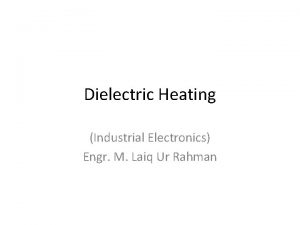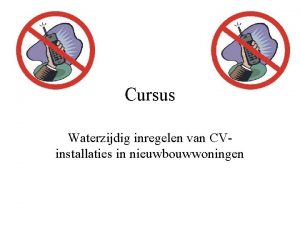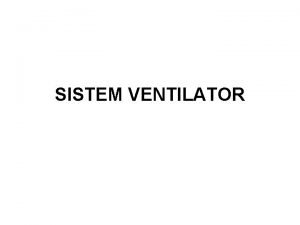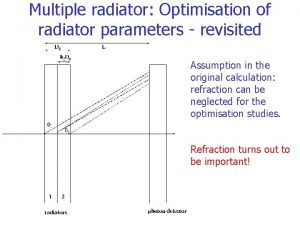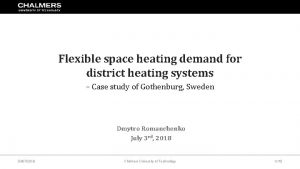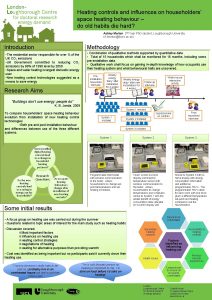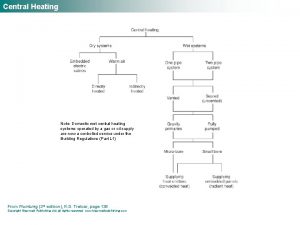Optimum Performance of Radiator Space Heating Systems Connected












- Slides: 12

Optimum Performance of Radiator Space Heating Systems Connected to District Heating Networks via Heat Exchangers Patrick Ljunggren, Janusz Wollerstrand & Svend Frederiksen Lund Institute of Technology Department of Energy Sciences Sweden

Topics • Consequences of ‘oversizing’ radiators (RADs) & Heat EXchangers (HEXs) • Various RAD circuit control methods • Constant or variable RAD circuit flow • Various methods of upsizing HEXs • ? ? ºC lower DH return temperature



Minimum primary return temperature, tr 1, at altered radiator supply temp. , trf, for increasing HEX area

Mode with excessive indoor air heating, simulated instantaneous temperatures space heating system 100 % oversized

Standard temperature program (constant flow) and optimized program (variable flow) no oversizing of radiators or heat exchanger

Lowered supply temperature set-point curve & unchanged flowrate (full curves) and optimized program (variable flow, dashed curves). 100% over-sized radiators and heat exchanger

Low flow balancing (design supply temperature, full curve, and reduced flow, dashed curves) 100% over-sized radiators and heat exchanger

Difference (in °C) in annual weighted return temperature from space heating heat exchanger versus reference case with a return temperature of 44. 9 °C 0 % oversized HEX 100 % oversized HEX 0 % oversized radiators, constant flowrate 0 -0. 5 0 % oversized radiators, optimized flowrate -1. 8 -3. 3 100 % oversized radiators, ‘low flow balancing’, constant flowrate -12. 3 -13. 5 100 % oversized radiators, lowered set point curve, constant flowrate -12. 1 -12, 3 100 % oversized radiators, Optimized flowrate -14. 9 -16, 2

Primary return temperature and secondary supply temperature at design heat load, assuming optimal radiator circuit flowrate (four different assumptions )

Conclusions Radiator control should be optimised to minimise primary return temperature By combining control optimisation & HEX upsizing gains in primary return of around 10ºC are possible
 Dielectric heating
Dielectric heating In a delta connected source feeding a y connected load
In a delta connected source feeding a y connected load In a triangle connected source feeding a y connected load
In a triangle connected source feeding a y connected load In a ∆-connected source feeding a y-connected load
In a ∆-connected source feeding a y-connected load Optimum sports performance
Optimum sports performance Deep squat corrective exercises
Deep squat corrective exercises This operates simply by heating air in an enclosed space.
This operates simply by heating air in an enclosed space. Civil heating systems
Civil heating systems Fungsi tutup radiator dengan 2 katup adalah
Fungsi tutup radiator dengan 2 katup adalah Voetventiel radiator afstellen
Voetventiel radiator afstellen Information radiator in agile
Information radiator in agile Something more
Something more Gambar kopling fluida
Gambar kopling fluida
